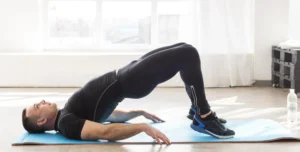Toned Abs for a Strong, Healthy Back
When it comes to achieving a strong, healthy back, many people focus on exercises that target the back muscles directly. While this is important, it’s equally essential to consider the role your abdominal muscles play in supporting your spine. In fact, properly toned abs are a key component of a healthy back. In this blog post, we’ll explore why strong abs are crucial for back health and how proper breathing techniques and targeted exercises can help you achieve the strength and stability needed for a pain-free back.
Why Toned Abs are Vital for Back Health
Your abdominals are more than just the muscles you see (or not!) when you look in the mirror—they play a crucial role in stabilizing your spine and supporting your posture. The abdominal muscles, including the rectus abdominis, obliques, and transverse abdominis, act as a natural corset that holds your internal organs in place and helps to distribute the load your spine experiences during daily activities.
When your abs are weak or underdeveloped, your back muscles must compensate for the lack of support, which can lead to strain, discomfort, or even injury. Strengthening your abs not only improves posture and reduces back pain, but it also enhances your overall stability, balance, and movement efficiency. A strong core helps prevent unnecessary strain on the spine by ensuring proper alignment and reducing the risk of muscle imbalances.
How Proper Breathing Can Help Tone Your Abs
A key aspect of engaging and strengthening your abdominal muscles is understanding how to breathe properly during exercises. When you breathe correctly, you’re actively engaging your abs and encouraging them to work in both directions. Believe it or not, it’s important to practice expanding your abs also!
Here’s a simple technique you can practice:
- Expand Your Belly: Start by taking a deep breath in through your nose, allowing your belly to expand outward (rather than your chest). This is known as diaphragmatic breathing, and it naturally activates your deep core muscles.
- Pull It Back In: As you exhale slowly through your mouth, draw your belly button in toward your spine, engaging your transverse abdominis—the deepest layer of abdominal muscles. This movement strengthens the muscles that are responsible for supporting your spine and stabilizing your pelvis.
When you practice this breathing technique, you’ll be working your abs both in expansion (when the belly expands out) and in contraction (when the belly pulls in). This dynamic motion helps activate a broader range of muscles and contributes to improved core strength over time.
Simple Ab Exercises to Strengthen Your Core
Now that we’ve covered the importance of breathing and abdominal engagement, here are a few basic exercises that can help strengthen your core and, in turn, support a healthy back.
Plank
- Start in a push-up position with your arms directly under your shoulders and your body in a straight line from head to heels. You can also use a modified push-up position and use your knees instead of your toes.
- Engage your core by pulling your belly button in toward your spine and hold the position for 20-30 seconds, gradually increasing the time as you build strength.
Dead Bug
- Lie on your back with your arms extended straight up toward the ceiling and your knees bent at 90 degrees with your toes pointed toward the wall.
- Slowly extend your right arm and left leg out while keeping your lower back pressed into the floor. Return to the starting position and repeat on the other side.
- Perform 10-15 reps on each side while maintaining core engagement.
Pelvic Tilts
- Lie on your back with your knees bent and feet flat on the floor. For extra stability, you can place your arms at your sides with your palms on the floor.
- Slowly tilt your pelvis upward by engaging your abdominal muscles and flattening your lower back against the floor.
- Hold for a few seconds, then relax and repeat for 10-15 reps.
Bicycle Crunches
- Lie on your back with your hands behind your head and your knees bent.
- Bring your right elbow toward your left knee while straightening your right leg out.
- Switch sides, bringing your left elbow toward your right knee.
- Perform 15-20 reps on each side.
Leg Raises
- Lie on your back with your legs straight and your hands resting by your sides.
- Slowly lift both legs off the ground, keeping them straight, until they are perpendicular to your body. If you need to modify, lift one leg at a time.
- Lower them back down with control and repeat for 10-15 reps.
Final Thoughts
A strong core is the foundation of a healthy back. By focusing on strengthening your abdominal muscles, using proper breathing techniques, and incorporating core exercises into your routine, you can improve your posture, reduce the risk of back pain, and enhance your overall physical health. Remember, your abs are not just for looks—they are an essential part of your body’s natural support system, and when they’re strong, they help protect your back and spine from unnecessary strain.
Start building your core today and feel the difference in both your posture and your overall well-being!
Ready to strengthen your core and support your back? Schedule an appointment with one of our doctors, and we can help assess your posture, identify any muscle imbalances, and guide you on your journey to a healthier, stronger body.



